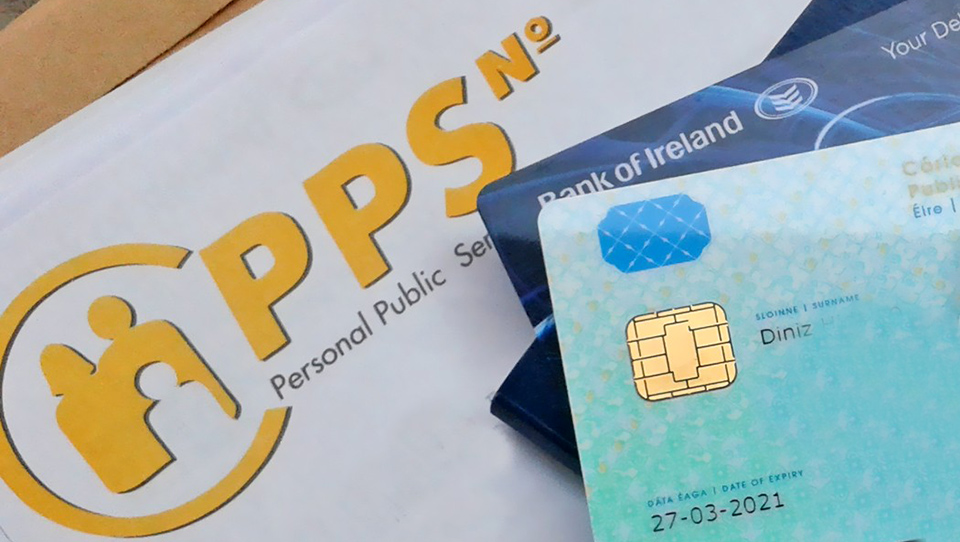The latest statistics on the issuing of Personal Public Service numbers show that there were 148,805 new issues to the end of August. That would suggest a total for the year of around 223,000 which would represent a 3.5% fall on the 231,028 issued for the whole of 2024.
Irish nationals made up 42,678 of the total which amounts to 28%. While that figure is alarmingly small it represents a slight increase on recent years.
One of the reasons for that is the rising numbers of births to non-Irish nationals whose children are registered as Irish citizens. Around 30% of all births are to mothers of other than Irish nationality according to the most recent statistics.
The following table shows a breakdown and comparison of the issuing of PPS numbers, IPAS applications and work permits for persons from outside of the EU to the end of August in order of the 12 major beneficiaries.
A number of key figures jump out from the above table:
The first is that of the total of 43,439 PPS numbers issued to the top 12 nationalities in receipt of new issues, 24% (if we include Ukrainians who have been granted Temporary Protection since January 1 this year) have arrived in the state to seek asylum.
The total number of asylum seekers to the end of August was 13,714 which accounted for 9.25% of all PPS numbers issued in the first eight months of 2025.
The overall number of International Protection applicants is significantly down on the same period in 2024, from 14,022 to 8,259 – a drop of 41%. In 2024 the combined number of International Protection and Ukrainian asylum seekers was 28,799 which represented 12.5% of all new issues of PPS numbers.
This emphasises the point that asylum seekers represent a relatively small, and falling, proportion of the number of immigrants who are arriving in Ireland.
Which might lead one logically to the conclusion that most of those who arrive here come here to work. That is not the case for persons from outside of the EU. There is no breakdown of the numbers of EU citizens who come here to work and many of them are students.
There were 92,030 students from the EU/EEA enrolled in English language courses last year but many of them were here for short courses and while there were 45,759 Italian students registered here in 2024, only 6,968 Italian citizens were issued with a PPS number.
It is easier to compare statistics for persons arriving from outside of the EU. Of the total number of 43,429 PPS issues, just 14,720 or 34% went to people who had come here to work. Which casts a rather different complexion on the mainstream narrative regarding immigration, work and revenue. .
It means that more than half of those who were issued with a PPS number were here for reasons other than work or to seek asylum. Those 23,897 could be accounted for by students, the dependents of people with a work permit or those granted family reunification.
Student numbers from outside of the EU are one obvious category given that an estimated 40,000 or around 16% of the total number of third level students are from countries such as India (between 7 and 8,000), China (around 4,000), Nigeria (2,500) and Brazil (1,500.)
Language schools account for more with the total number for English language students enrolled here for 2024 given as 128,761. Numbers have more than doubled since 2019. According to English Education Ireland (EEI), the association of private providers, the sector is worth €792 million.
Brazil was the leading country of origin for students from outside of the EU which explains the huge gap between 9,655 PPS issues to the end of August and the 2,123 issued with a work permit. They are people who are officially employed. How many are here to study but who also work is anyone’s guess.
That informal economy which obviously exists and which is obviously dependent to a large extent on Brazilians and others who would normally require a work permit is facilitated by the fact that students from Brazil, Mexico and some other Latin American countries do not require a visa.
That is because if they come here the Irish state has a visa free agreement with them for purposes of education and other purposes. They can still of course be issued with a PPS number and apply for work here. 2,154 Chinese students were enrolled in language courses in 2024 but they do require a visa.
What the latest PPS numbers illustrate is that the vast bulk of immigration has nothing at all to do with asylum seeking. The main drivers of mass immigration are work and the facility to acquire residency for the dependents of work permit holders; and a rather opaque area that includes those dependents, the beneficiaries of family reunification and students.
The one constant trend over the past 20 years has been the steady decline in the number of PPS numbers issued to Irish people, even if the figure for new issues has recently experienced a small upturn in large part due to the birth of children to non Irish mothers.


